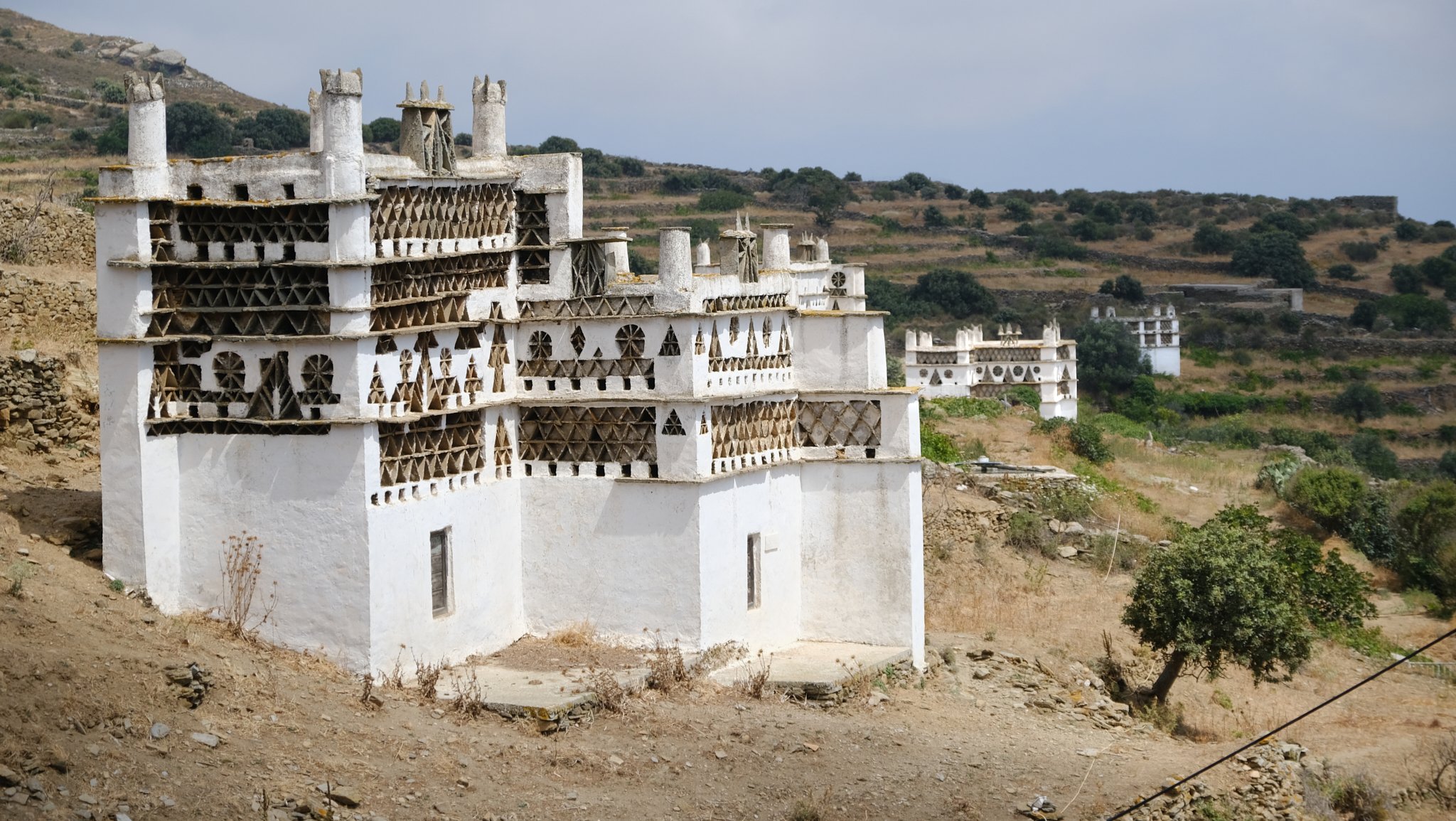Cyclade dovecotes
37 35’ 00” N ⎈ 25 07’ 00” E
Tinos, a Greek island in the Cyclades, is famous not only for its religious significance and stunning landscapes but also for its dovecotes. These unique structures, built primarily during the Venetian rule (1207–1715), served both practical and aesthetic purposes, making them a distinctive feature of the island’s cultural and architectural heritage.
History & Purpose
Dovecotes were originally constructed as pigeon houses, providing shelter for birds that were an important source of food, fertilizer, and even messenger services. Wealthy landowners, particularly during the Venetian period, built these structures as a sign of prestige, incorporating intricate geometric carvings into their facades. The patterns, often triangles, diamonds, and stylized flowers, were not just decorative but also functional—allowing air to circulate while deterring predators.
Photogenic Beauty
Their striking white or stone-colored facades stand out against the island’s rolling green hills, terraced landscapes, and deep blue skies. Their geometric patterns create mesmerizing light and shadow effects, particularly during sunrise and sunset. Each dovecote tells a story—some remain well-preserved, still home to pigeons, while others have aged gracefully, their weathered stone adding to their timeless charm.





